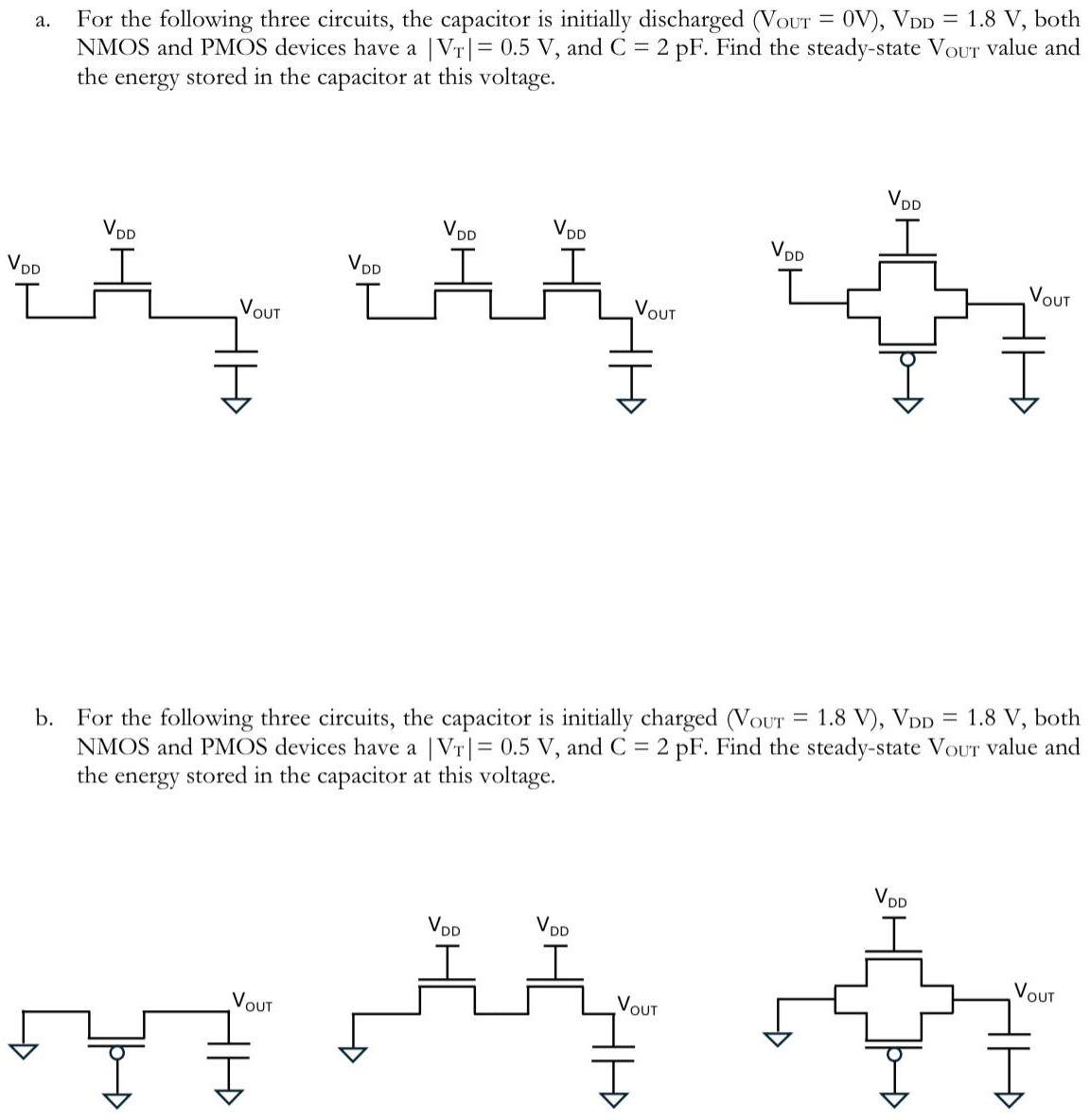a. For the following three circuits, the capacitor is initially discharged (VOUT = 0 V), VDD = 1.8 V, both NMOS and PMOS devices have a |VT| = 0.5 V, and C = 2 pF. Find the steady-state VOut value and the energy stored in the capacitor at this voltage. b. For the following three circuits, the capacitor is initially charged (VOuT = 1.8 V), VDD = 1.8 V, both NMOS and PMOS devices have a |VT| = 0.5 V, and C = 2 pF. Find the steady-state Vout value and the energy stored in the capacitor at this voltage.
